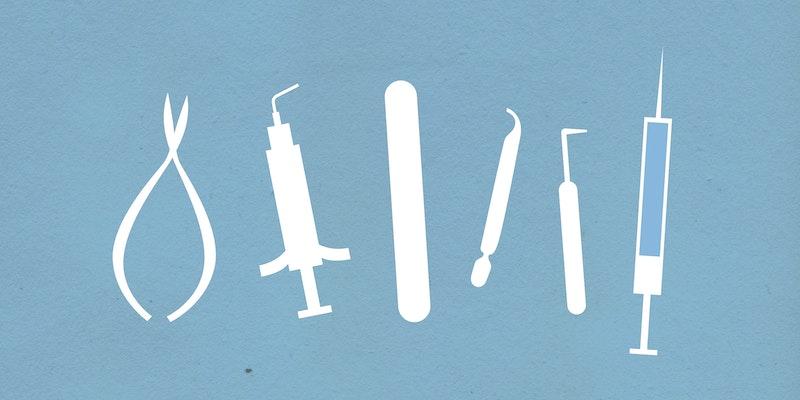Onychomycosis, or toenail fungal infections, impacts a large section of the global population but is typically overlooked. This seemingly harmless illness can cause problems and pain if neglected. Although tiny, toenail fungus can drastically influence a person's quality of life. This condition must be addressed to avoid complications and maintain foot health.
What Is Onychomycosis?
Fungi infest the nail bed, nail, or skin around it, causing onychomycosis or toenail fungus. Dermatophytes, yeasts, and non-dermatophyte molds cause most problems. This disorder causes discolored, thicker, brittle nails that hurt.
10% of Americans have toenail fungus. Its risk increases with age. Over 70s have 50% more fungal toenail infections. A weak immune system or a family history of this infection increases risk. While often overlooked, fungal toenail infections can lower quality of life. This can cause pain, discomfort, and self-consciousness, especially in social situations. Getting rid of fungal toenails is crucial to regaining confidence and normalcy.
Left untreated, toenail fungus can lead to a plethora of complications. It can cause permanent damage to the nail, spread beyond the feet, and lead to secondary bacterial infections. Individuals with diabetes or weakened immune systems are especially susceptible to complications from a fungal infection on toenail.
Identifying Different Types of Toenail Fungus

Recognizing the various types of toenail fungus is pivotal for effective management. It helps healthcare professionals determine the most appropriate fungal-infected toenail treatment and enables individuals to understand their condition better.
Distal Subungual
Toenail fungal infections caused by dermatophytes are the most common, accounting for 60%. The nail bed and underside are most affected, causing discoloration, thickness, and crumbling.
White Superficial
White Superficial is less common and is usually caused by non-dermatophyte molds. It primarily affects the upper layer of the nail, leading to white spots or patches on the surface. This fungal toenail infection often responds well to treatment when detected early.
Candida
Candida is a yeast responsible for this less common form of toenail fungal infection. The incidence of Candida infections has been on the rise, necessitating vigilance and prompt fungal infected toenail treatment when diagnosed.
Proximal Subungual
This type is more prevalent in individuals with compromised immune systems. It affects the base of the nail and is caused by dermatophytes. Proximal Subungual infections require a different approach in fungal infected toenail treatment than other types.
Recognizing Symptoms of Toenail Fungal Infection
Identifying the symptoms of a toenail fungal infection is the first step toward seeking appropriate treatment. Early recognition facilitates a more straightforward and practical management approach.
Nail Changes
The most noticeable symptoms of a fungal toenail infection are changes in the nail's appearance. These include thickening, discoloration (usually yellow or brown), and brittleness. The nail may also develop an irregular surface and shape.
Pain and Discomfort
While some individuals may not experience pain, others may find a fungal infection on the toenail particularly uncomfortable. This discomfort can interfere with walking and wearing shoes, affecting daily activities.
Odor
An unpleasant odor emanating from the infected toenail is another common symptom. This can be distressing for individuals, leading to embarrassment and avoidance of social situations.
Separation of the Nail
In advanced cases of fungal toenail infection, the nail might separate from the nail bed, a condition known as onycholysis. This separation can make the area susceptible to secondary infections, emphasizing the importance of timely fungal infected toenail treatment.
Testing Procedures

Accurate diagnosis is a cornerstone for the successful management of toenail fungal infections. By employing various testing procedures, healthcare professionals can pinpoint the cause of the disease and tailor the fungal infected toenail treatment accordingly.
Testing
- KOH Test: A sample of the infected nail is treated with potassium hydroxide (KOH) to dissolve non-fungal cells, making the fungus more visible under a microscope.
- Culture Test: Nail clippings or scrapings are cultured in a medium that encourages fungal growth, allowing for the identification of the specific type of fungus.
- Histopathology: Using special stains on nail samples helps identify fungal elements, contributing to a more accurate diagnosis.
Identifying the Causative Agent
Identifying the specific type of fungus is essential for optimizing the fungal infected toenail treatment. Some fungal agents are more resistant to particular therapies, necessitating specialized antifungal agents.
Differential Diagnosis
Differential diagnosis is crucial given the variety of conditions that mimic the symptoms of toenail fungal infections. Conditions such as psoriasis, lichen planus, and nail trauma can exhibit similar symptoms but require a different approach to treatment.
Treatment Options for Toenail Fungus
Successfully treating a fungal toenail infection hinges on utilizing appropriate medical interventions. Each infection type and intensity has its own treatment choices.
Topical Antifungal Agents
To treat minor toenail fungus, topical antifungals are typically used. Creams, ointments, and nail lacquers for fungal toenail infections are available. They target the fungus on the nail surface but may take longer to show results.
Oral Antifungal Medication
Oral antifungal medications are more potent for treating fungal infections on toenails. They work systemically, reaching the disease through the bloodstream, and are typically prescribed for more severe or persistent cases.
Laser Therapy
Laser therapy is a newer modality for treating toenail fungus. It employs focused light energy to generate heat, which, in turn, eradicates the fungal cells. Studies indicate variable success rates with this technique, and more research is needed to determine its overall effectiveness.
Surgical Intervention
Surgical intervention may be necessary when the fungal toenail infection is particularly resistant or has led to significant nail damage. This might involve removing the affected nail to apply antifungal drugs directly to the infection site.
Preventive Measures and Lifestyle Modifications
Prevention is invariably better than cure, valid for toenail fungal infections. Adopting preventive measures and lifestyle modifications can significantly reduce the risk of developing a fungal infection on toenails.
Personal Hygiene
Maintaining good personal hygiene is crucial in preventing toenail fungus. This includes keeping the feet clean and dry, changing socks regularly, and avoiding walking barefoot in communal areas.
Choice of Footwear
Choosing the proper footwear plays a significant role in preventing fungal toenail infection. Shoes should be well-ventilated and made of materials that allow the feet to breathe. Moreover, avoiding tight shoes reduces the risk of nail trauma, which can predispose to fungal infections.
Regular Foot Inspections
Regularly inspecting the feet for any signs of fungal infection is essential, especially for individuals at higher risk. Early detection facilitates timely fungal infected toenail treatment and prevents the condition from worsening.
Avoiding Shared Footwear and Nail Tools
Not sharing footwear and personal nail tools is a simple yet effective measure to prevent the spread of toenail fungus. Ensuring that nail salons use sterilized equipment is also pivotal.




